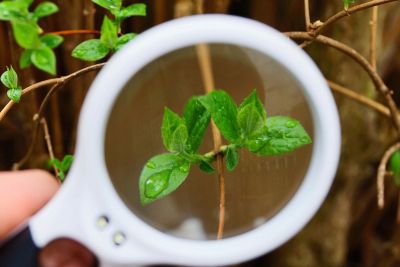Since plants only carry flowers for part of the year, leaf identification is often more useful. Read on for information on how to tell plant leaves apart, including tips on identifying flowers by their leaves.
How to Identify Plant Leaves
There are some plants with such unique leaves that most people can identify them. For example, the sugar maple leaf (the central image on the Canadian flag) is quite well known. Plant leaf identification is more difficult though when the foliage shape isn’t as well known. You may look at the plants growing in your garden and wonder how to tell plant leaves apart. It helps to know that a leaf has two parts, the leaf blade (the biggest part of the leaf) and the stalk (or petiole) that attaches the blade to the stem. Each of these can help you figure out the plant.
How to Tell Plant Leaves Apart
The place to start for plant leaf identification is with the shape of the leaf blade. Some are wide, (like oak or hydrangea leaves) while others are narrow and resemble needles (like pine needles) or scales (like cedars). If your leaf is wide, look at other characteristics to start identifying a plant by its leaves. Is there only one leaf attached to the stalk or many? If there are many, are they palmate (with more than one leaf attached at the end of a stalk like fingers on a palm) or pinnate (with leaves attached along a single stalk). Next, focus on leaf lobes. Leaves can be lobed or not lobed. Japanese maple leaves have deeply cut lobes while round nasturtium leaves do not have any lobes at all. Finally, look at the edges of the leaves. Some leaf edges are smooth; these leaves are called “entire.” Other types of leaves have notched or toothed edges.
Plant ID Tips
There are other plant ID tips that should be mentioned on how to identify leaves. Take a look at the shape of the leaf when identifying flowers by their leaves. The leaf shape can be round, oval or oblong, lance shaped, or elliptic. The pattern of veins in the leaf can also help you figure out the type of plant you are dealing with. Are the veins parallel? Do they look more like a net? Are the veins prominent? The thickness of a leaf is another way to help identify plants. Is the leaf delicate or leathery? Another important clue might be the leaf fragrance. When you crush or stroke the leaf, what does it smell like? By taking the time to track down these characteristics of a leaf, you will be well on your way to identifying the plant you are looking at. The more information you have about a leaf, the higher the likelihood that you will accurately identify it.
